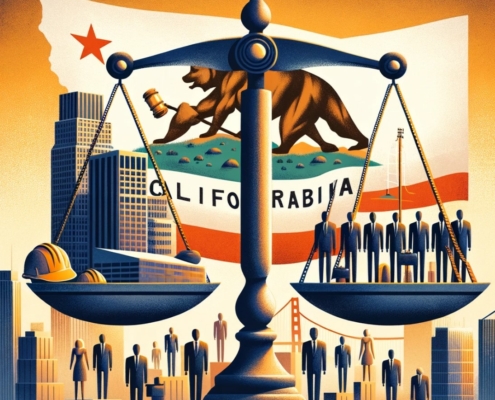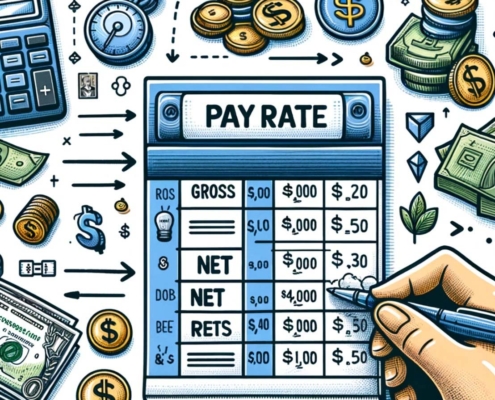Difference between FMLA and CFRA
The CFRA and the FMLA are state law and federal laws that allow workers to take unpaid, job-protected leave. CFRA is California law and FMLA is a federal program. The CFRA has substantially broader coverage than the FMLA, covering private employers with five or more employees in addition to public employers regardless of their size.
By Douglas Wade, Attorney
Email | Call (800) 484-4610
What is FMLA and CFRA leave policy?
CFRA and FMLA are laws meant to protect workers who need to take time off work to deal with personal life events or situations. These laws permit employees to take care of issues that they otherwise would have needed to manage while also working full-time. If it were not for these pieces of legislation, workers would lose their job or seniority in a company for simply dealing with important matters in their personal lives.
An employee should be familiar with the differences between CFRA and FMLA so that they may choose which one to use when in need of time off from work. To make sure that one is taking advantage of their federal government and state of California benefits, an employee should contact an employment or family rights attorney for counsel.
In this article, our attorneys for employers and HR discusses the difference between CFRA vs FMLA as follows:
What are the rules around FMLA?
FMLA stands for the Family and Medical Leave Act, which is a federal law in the United States that provides qualifying employees with as many as 3 months of unpaid leave per year for certain medical and family reasons. The FMLA applies to employers in the private sector with at least 50 employees, as well as all public agencies and schools.
Under the FMLA, qualifying employees may take leave for reasons such as the birth or adoption of a child, to care for a seriously ill family member, or for the employee’s own serious health condition. During the leave period, the company must maintain the employee’s health benefits and restore the employee to the same or equivalent position upon their return to work.
To qualify for FMLA leave, a worker must have been at their company for a minimum of one year, and for a minimum of 1,250 hours over the previous year. Further, the employee must work at a place where the company has at least 50 workers within a radius of 75 miles.
What are the rules around CFRA?
CFRA stands for the California Family Rights Act, which is a state law in California that provides qualifying employees with as many as 3 months of unpaid leave per year for certain family and medical reasons. The CFRA applies to private sector employers with at least 50 employees, as well as all public agencies and schools, in California.
The CFRA is similar to the federal Family and Medical Leave Act (FMLA), but it applies only to employers in California and includes additional provisions that are unique to California law. Under the CFRA, qualifying employees may take leave for reasons such as the birth or adoption of a child, to care for a seriously ill family member, or for the employee’s own serious health condition.
During the leave period, the company must maintain the employee’s health benefits and restore the employee to the same or equivalent position upon their return to work. To qualify for CFRA leave, an employee needs to have worked for their company for a minimum of one year, and for a minimum of 1,250 hours over the previous year. Further, the employee must work at a place where the employer has at least 50 employees within a radius of 75 miles.
What are the differences between FMLA and CFRA?
FMLA and CFRA are both laws that provide qualifying employees with as many as 3 months of unpaid leave per year for certain medical and family reasons. However, there are some key differences between the two laws:
- Coverage – FMLA applies to private sector employers with at least 50 employees and all public agencies and schools, while CFRA applies only to employers in California with at least 50 employees and all public agencies and schools in California.
- Eligibility – The eligibility criteria for FMLA and CFRA are similar, but there are some differences. To qualify for FMLA leave, an employee needs to have worked for their company for a minimum of one year and for a minimum of 1,250 hours over the past year. To qualify for CFRA leave, an employee must meet the same 12-month and 1,250-hour requirements and must work at a place where the company has at least 50 employees within a radius of 75 miles, but there is an additional requirement that the employee must work for the employer for at least one year before taking CFRA leave for the birth or adoption of a child.
- Reasons for leave – The reasons for leave under FMLA and CFRA are similar, but there are some differences. For example, FMLA allows employees to take leave to care for a covered family member with a serious health condition or for a qualifying exigency related to a covered military member’s deployment, while CFRA does not have these specific provisions.
- Notice requirements – FMLA and CFRA both have notice requirements for employees seeking leave, but the requirements are slightly different. For example, FMLA requires employees to provide 30 days’ notice if the need for leave is foreseeable, while CFRA requires only “reasonable” notice.
- Interaction with other laws – FMLA and CFRA can interact with other laws, such as disability laws, in different ways, and the requirements for each law may vary depending on the specific situation.
Can you take CFRA and FMLA at the same time?
In circumstances where a leave qualifies for both FMLA and CFRA leave, the leaves will run concurrently for a total of 12 weeks. FMLA and CFRA can work together when an employee is eligible for both laws and take leave for a reason that qualifies under both laws. In such cases, the employer must designate the leave as both FMLA and CFRA leave, and the employees’ leave counts against both the employee’s FMLA and CFRA entitlements.
For example, if a qualifying employee takes six weeks of FMLA leave to care for a seriously ill family member and then takes an additional six weeks of CFRA leave for the same reason, the employee’s leave counts against both the employee’s 12-week FMLA entitlement and their 12-week CFRA entitlement. The company must maintain the employee’s health benefits and restore the employee to the same or equivalent job upon their return to work.
It is important to note that while FMLA and CFRA have many similarities, they are separate laws with separate requirements, and an employer’s compliance with one law does not necessarily mean compliance with the other. Employers in California must comply with both FMLA and CFRA, and they must ensure that their policies and procedures comply with both laws.
FMLA violations by employers
Companies are required to comply with the provisions of FMLA and CFRA, and there are several ways to tell if an employer is following these laws:
- Notice and posting requirement. Employers are required to provide employees with information about their rights and responsibilities under FMLA and CFRA, and to post notices in visible places in the workplace. An employee can check to see if the employer has posted required notices and distributed the necessary information to employees.
- Eligibility requirement. Employers must determine an employee’s eligibility for FMLA and CFRA leave and notify the employee of their eligibility status. An employee can check to see if they have received the required notice of their eligibility status.
- Leave request. Employers are required to grant qualifying employees leave for qualifying reasons under FMLA and CFRA. An employee can check to see if their employer has granted their request for leave and if the employer has designated the leave as FMLA or CFRA leave, as appropriate.
- Restoration to job or equivalent position. Employers must restore employees who take FMLA or CFRA leave to the same or equivalent job upon their return to work. An employee can check to see if their employer has restored them to their previous job or an equivalent position with the same pay, benefits, and other conditions and terms of employment.
- Maintenance of health benefit. Employers are required to maintain an employee’s health benefits during their FMLA or CFRA leave. An employee should check to see if their employer has continued to provide them with health benefits during their leave.
If an employee believes that their employer is not complying with FMLA or CFRA, they may wish to contact a labor law attorney or file a complaint with the U.S. Department of Labor’s Wage and Hour Division or the California Department of Fair Employment and Housing.
Have a quick question? We answered nearly 2000 FAQs.
See all blogs: Business | Corporate | Employment
Most recent blogs:
































